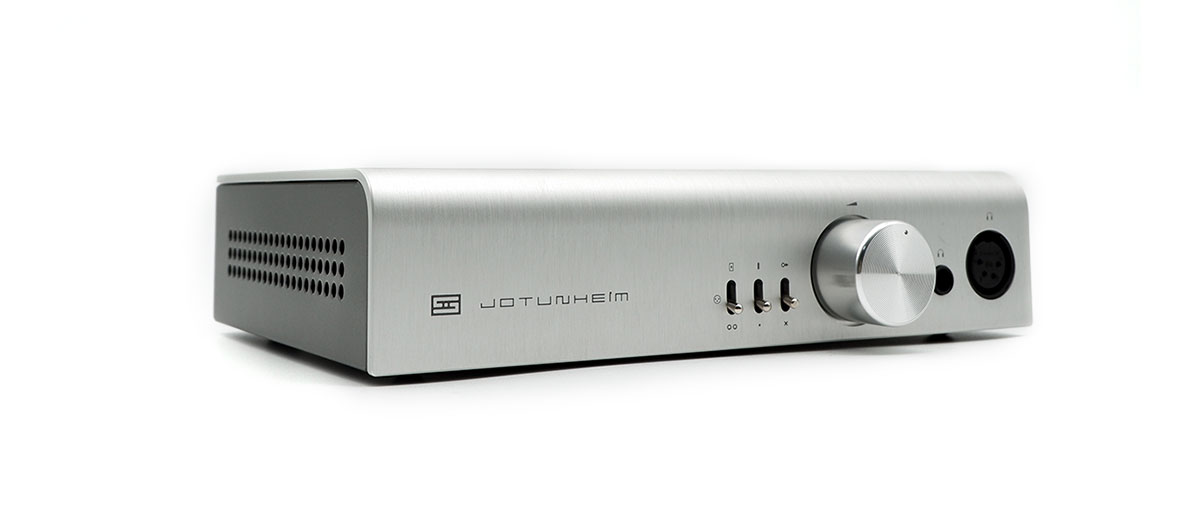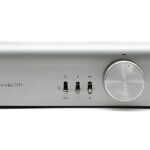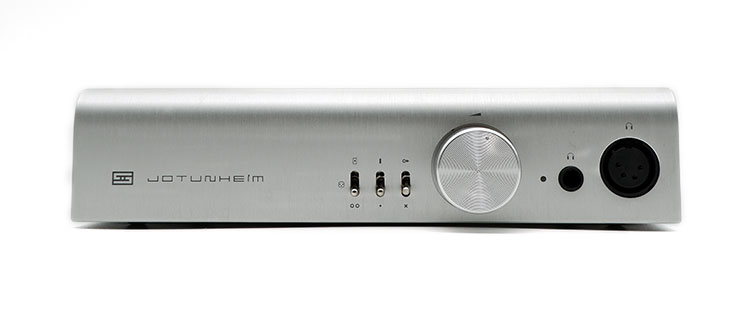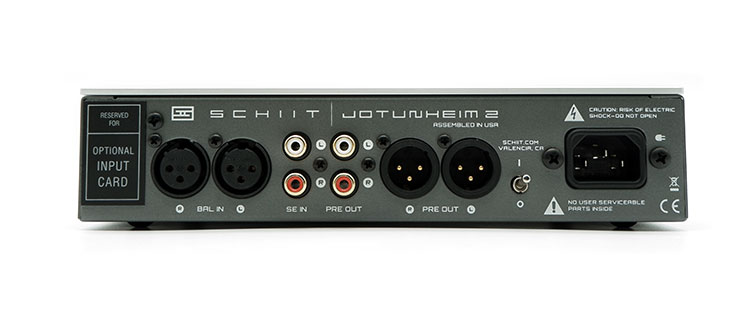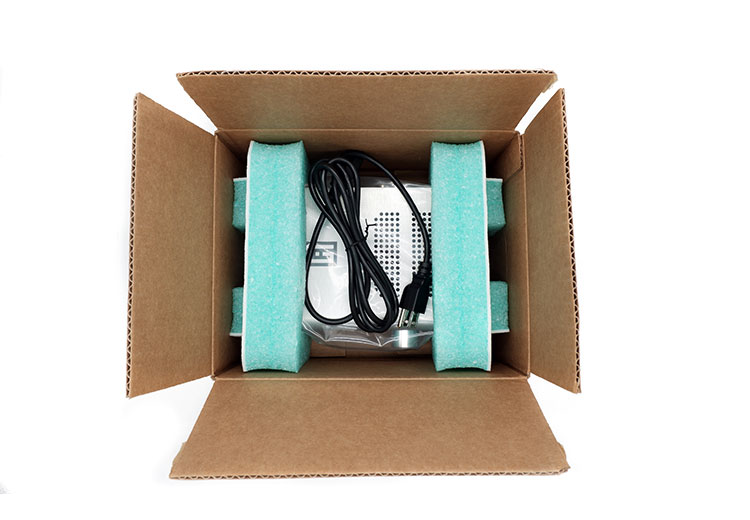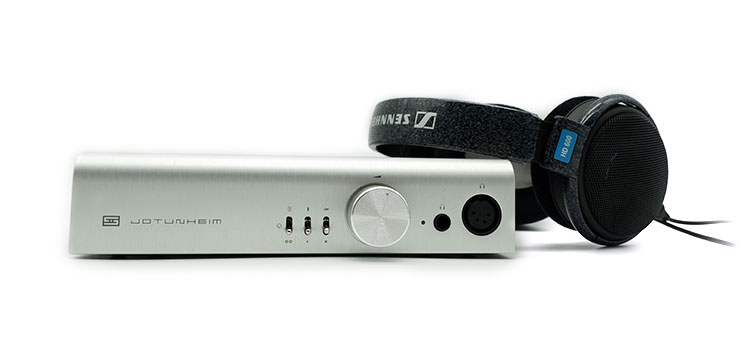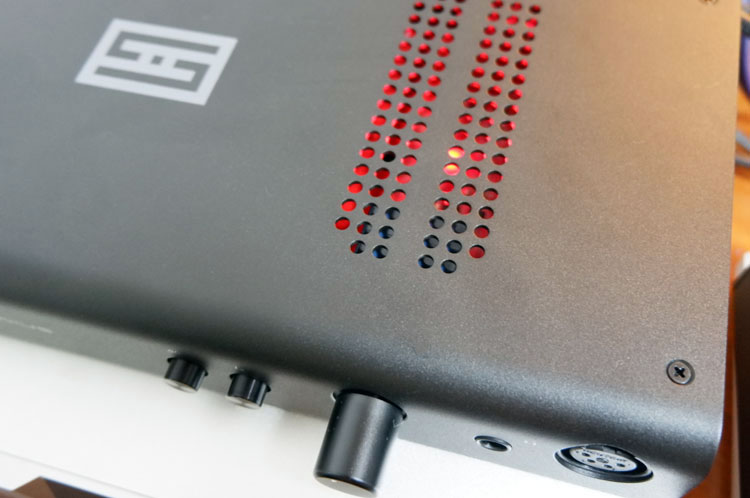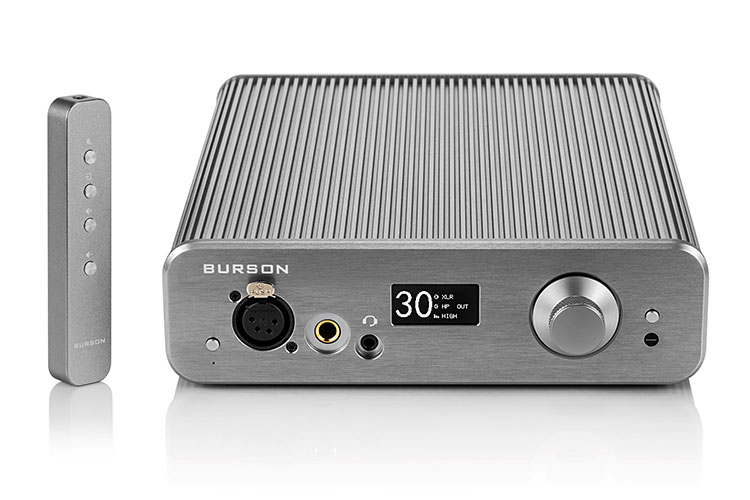The Schiit Audio Jotunheim 2 is a 2nd gen balanced headphone amplifier and pre-amp offering up to 6w into 32Ω of output power. It is priced at $399.
Disclaimer: The Schiit Audio Jotunheim 2 sent to us is a direct purchase from their website. We thank the team at Schiit Audio for shipping it safely and quickly.
To read more about Schiit Audio products we have featured on Headfonics click here.
Note, this review follows our new scoring guidelines for 2021 which you can read up on here.
Five years ago, the original Jotunheim was released by Schiit. At the time, it was groundbreaking because it’s a balanced amplifier at below $400 when most other balanced headphone amplifiers cost quite a bit more.
In 2021, the landscape of balanced amplifiers has changed significantly. There are some balanced amplifiers now that are being offered for a lot less than Jotunheim’s asking price of $399, THX AAA-based amplifiers selling for as low as $250, and even Schiit themselves came out with a true-balanced amplifier in the Magnius that sells for just $199.
Despite that, Schiit claims that the Jotunheim 2 is the ‘best $2400 amplifier that you can buy for $400’?
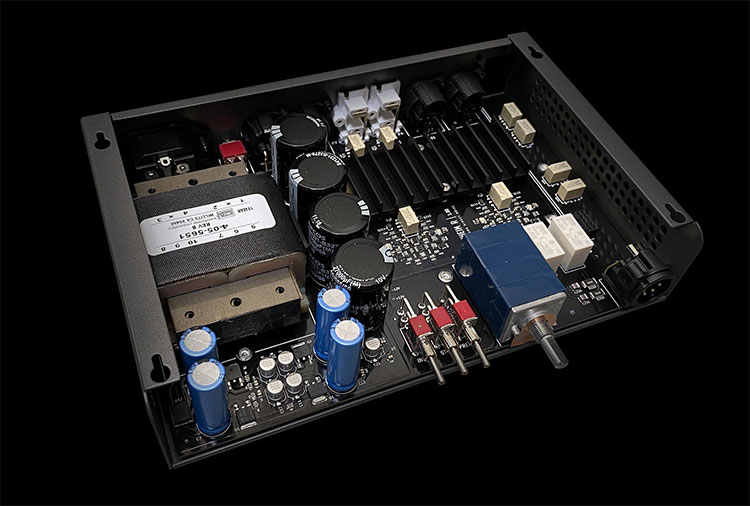
Tech Highlights
The reason that Schiit has been touting the Jotunheim 2 as the ‘best $2400 amplifier that you can buy for $400’ is because of the matched components.
Electronic components come out of a production line with some tolerances that become small deviations from each other. This would then translate to small differences between the left and right channel or even worse, the differences between the (+) portion of the balanced circuit from the (–) portion of the balanced circuit.
Ensuring a perfect match between components used to be costly, since each component needed to be matched manually by testing each one, and discarding the rest that can’t be matched.
However, with the current manufacturing process, obtaining matched pairs from component manufacturers has become quite a bit easier, and I believe this is what Schiit has done with the Jotunheim 2.
Aside from matched components, the Jotunheim 2 implements some trickle-down technology from other Schiit Products, such as Nexus and Continuity, in this specific case, it’s Continuity S.
Nexus
Nexus is a technology that was developed by Schiit Audio for their power amplifiers and has now been implemented with their Jotunheim 2.
Nexus is a special circuit configuration that ensures that balanced and single-ended signals can be accepted by their differential circuit gain stage, and it can output to both single-ended and balanced signals. This technology ensures that the quality of the balanced and the single-ended circuit will be more or less the same.
Continuity
Continuity on the other hand is a technology implemented with their Aegir speaker amplifier. Continuity aims to create a seamless transition from class A mode to class AB mode. This would give the amplifier the flexibility to deliver the required amount of power even when the music requires a faster transient response from the amplifier’s circuitry.
Continuity, however, is too large to be implemented inside the Jotunheim 2, so Schiit developed Continuity S, which works basically like Continuity, except that it’s less focused on smoothing out transconductance splice between the class A and class A/B mode, but more focused on minimizing transconductance droop.
Design
The Schiit Jotunheim 2 has all the hallmarks of the classic Schiit Audio design philosophy and as with most of their products comes in silver and black. Not a huge amount has changed in terms of aesthetics from the original aside from the additional toggle switch in front.
The chassis is also the same as what is used in the previous Jotunheim, the Asgard, and Lyr 3. The footprint is also fairly common in the Schiit lineup, which includes DACs like the Modius or the Bifrost. So creating a neat stack with the Jotunheim 2 and an external DAC is also an option.
The power indicator on the Jotunheim 2 is a white LED mounted in front, which is a step up from the red LED mounted inside the Magnius. This is just more visible, especially when there is something stacked on top of the Magnius.
Opening the Jotunheim 2 chassis is not that difficult, it’s a matter of pulling out the volume knob, removing a screw, and sliding out the top part. This is done so that it would be possible to replace the input cards on your own.
Like most other Schiit products, the power switch is still located at the rear, so turning the unit on/off will require reaching for it, which might be a bit inconvenient if the Jotunheim 2 is part of a stack.
I/O
In front, there are 2 outputs, a 4-pin balanced XLR output, and a ¼” single-ended output. There then are 3 toggle switches, the first is the input selection, and it is done with a front-mounted 3-way toggle switch.
Right beside it is the gain switch to toggle low and high gain, and then with the Jotunheim 2, Schiit has added a pre-amp toggle switch that turns off the rear pre-amp outs as needed.
At the back, the Jotunheim 2 has an input expansion slot for either an AK4490 delta-sigma DAC, a multibit DAC, or a phono pre-amp input. Right beside the input expansion slot are the RCA and the 3-pin XLR inputs, and then the RCA and 3-pin XLR pre-amp outs.
Still stuck at the back of the amplifier is the power switch, that Schiit insists on putting at the rear of most of their devices, and finally, a standard IEC power plug that can easily be used with fancier audiophile power cables.
Specifications
In terms of the power output specifications, the Jotunheim 2 is not much more powerful than the previous generation.
Through the balanced outputs, this is already powerful enough to drive most current hungry planars with the 7.5W available at 16Ω, while still providing enough voltage to push high impedance dynamic drivers with 1.2W at 300Ω. The single-ended output is no slouch either, as it can push out 2.4W at 16Ω, and 330mW at 300Ω.
The Jotunheim 2 is also equipped with a gain switch and an ALPS RK27114 true balanced potentiometer. These 2 features are essential because of the amount of power that the Jotunheim 2 can put out. This would keep the power in check, and ensure that the Jotunheim 2 would not have volume matching issues or hissing even with sensitive IEMs.
Output impedance for both single-ended and balanced outputs are both at <0.1 ohms. The SNR for the balanced output remains at 123dB, while it’s at 102dB through the single-ended output. These are well below the audible threshold, so it ensures that the amplifier is going to be quiet.
Packaging & Accessories
Schiit usually packs their amplifiers in a simple brown box, and it’s stuffed with some foam to keep the device from moving around while it’s in transit. The amplifier comes with the power cable and some documentation. And that’s it! It’s simple, at least Schiit is being efficient about it.
Sound Impressions
Summary
With the Jotunheim 2, the frequency response is generally neutral. There is no particular frequency range that ends up boosted. However, one thing that’s evident with the sound of the Jotunheim 2 is the slightly thicker bass region. It’s not boosted, but it’s just a bit thicker because of the slightly more euphonic harmonic presentation. This gives faster headphones a slightly more romantic character.
I’m not saying that the Jotunheim is slow and mushy, though. It can still resolve quite well. Where textures especially in the midrange and up into the treble become easy to appreciate.
When it comes to dynamics, the Jotunheim 2 can present a decent amount of dynamic range. Where soft sounds from classical violin tracks can sound soft while creating a dramatic crescendo when called to do so.
Staging
The soundstage on the Jotunheim 2 is not particularly large. So don’t expect it to fix headphones that may seem to lack a bit of soundstage. However, when it comes to layering within the soundstage, the Jotunheim 2 places sound elements very precisely within the soundstage that it creates.
The Jotunheim 2 can also create sharp images within the soundstage. This would help with the image directionality since each sound element becomes quite discrete in its place within the soundstage. Playing a song like Bubbles by Yosi Horikawa, the falling balls occupy a pinpoint accurate amount of space within the soundstage, while the size of each ball can easily be visualized.
Synergy
With the slightly thicker character of the Jotunheim 2, the choice of which DAC will go upstream of the Jotunheim 2 will be very important. I tested it with both the Cayin iDAC-6 Mk1 and the Chord 2qute.
With the iDAC-6’s tube mode, it made the Jotunheim 2 even thicker, and slightly more congested. On the 2qute, there is a considerable increase in speed and dynamics when it’s paired with the Jotunheim 2.
I ended up listening to the 2qute and Jotunheim pairing more because it’s a more balanced sound overall. The Cayin iDAC-6 with its tube output stage connected to the Jotunheim 2 has its charms too though.
Sennheiser HD600
With the amount of power that the Jotunheim 2 can push, it can easily get loud without going past the 10 o’clock position on high gain. With drum hits, each hit has a good sense of punch and slam. However, the warmer nature of the Jotunhiem 2 makes the HD600 a bit veiled. The midrange texture becomes slightly mushy.
The sense of space and image directionality are both still very accurate though. However, the image that is created by the HD600 with the Jotunheim 2 is not the sharpest that it can be.
Audeze LCD-X
The Audeze LCD-X is a headphone that doesn’t require a lot of power to push, and the Jotunheim 2 drives it well in low gain, below the 11 o’clock position. The LCD-X is a fairly neutral headphone that offers a good amount of punch while having a slightly plucked presentation.
The pairing of the LCD-X with the Jotunheim 2 is very pleasant. The Jotunheim 2 made the LCD-X a bit more romantic, where the sense of punch and slam is complimented by the warmer presentation of the Jotunheim 2.
The faster nature of the LCD-X still shines through though. Each drum hit is textured, with the hollowed nature of the drum cavity being presented vividly. The soundstage is not increased, but image accuracy and texture remain very sharp.
Mangird MT4
The options for headphone pairing with the Jotunheim are very extensive. However, I did try it with more efficient IEMs such as the Mangird MT4 IEM though, and it proved to be a good combination.
The slightly thicker presentation gave the MT4 a better sense of natural decay, while still retaining the very engaging natural tonality. The Jotunheim 2 also gave the MT4 a wide soundstage while creating accurate images within the soundstage.
Select Comparisons
Schiit Magnius
Technical
Coming from the same company, the Magnius and the Jotunheim 2 have a lot of similarities. The package that they come is very similar, but the Jotunheim 2 has an internal power supply connected via an IEC power cable, while the Magnius has a switch-mode power supply.
The available I/O’s of the 2 amplifiers are the same, and the layout is also quite similar, except for the chassis that the Magnius comes in. The LED is now in front of the case with the Jotunheim 2, instead of glowing from the inside of the case of the Magnius.
While both have pre-amp outs, the Jotunheim 2’s pre-outs can be switched off. Of course, the biggest difference in terms of features between the 2 amplifiers is that the Jotunheim 2 can accommodate input expansion cards.
When the Jotunheim 2 is ordered as a plain amplifier, the 2 amplifiers have a very similar set of features. Under the hood, it’s a very different story though.
The Jotunheim 2 is built with discrete components and features trickle-down technologies such as Nexus and Continuity S. While the Magnius utilizes an op-amp-based circuit design similar to the Schiit Magni Heresy, except that it’s in balanced form.
Power
On paper, the power output numbers of the 2 amplifiers are very close, where the Magnius has a 6.0W output at 16Ω in balanced, while the Jotunheim 2 has a 7.5W output at 16Ω in balanced.
THD numbers are also very similar, except that the Magnius’ pure op-amp-based design seems to have more pleasing THD numbers compared to the Jotunheim 2. Should this be enough of a reason to buy the Jotunheim 2 as an amp at double the price?
Performance
While on paper, the 2 amplifiers may seem to have very close specs, the difference in sound quality between the 2 amplifiers is quite dramatic.
On first listen, I noticed how they both delivered a good amount of punch. Then, I had the impression that the Magnius was the more resolving of the 2 amplifiers because it sounded slightly sharper and seemingly more incisive. In contrast, the Jotunheim 2 sounded slightly warmer and thicker in its presentation.
Upon further examination though, the Jotunheim 2 actually has better technical abilities than its little brother. Soundstage might be slightly wider on the Magnius, but the layering within that soundstage is not as fleshed out as it is on the Jotunheim 2.
In terms of dynamic range, the Jotunheim 2 also pulls ahead, as it can present quiet passages more gently while having a more dramatic crescendo than the Magnius. Texturization is about equal on both amplifiers, however, the Magnius seems to lose its composure in busier passages when compared to the control that the Jotunheim 2 has.
On paper, the Magnius and the Jotunheim 2 have very similar specs, but there is a reason why Schiit has positioned the Jotunheim 2 a bit higher than the Magnius. The Jotunehim 2’s trickle-down technology and class A/B with Continuity S design pushed it above the Magnius in terms of soundstage depth, and image separation while having a slightly warmer character than its sibling.
Burson Soloist 3x Performance
Technical
The Soloist is a significantly more expensive amplifier at around $1195, almost 3x the cost of a Jotunheim 2. In the box, the Soloist 3X has a few extras like a remote, 4 stock opamps, a 3.5mm headphone/mic splitter, and a hex key to open the unit up for op-amp rolling. The Soloist 3X also comes with an external power supply, instead of the integrated one on the Jotunheim 2.
When it comes to customization options, the Soloist 3X has interchangeable op-amps in the input stage and the volume control stage.
While the Soloist 3X comes with the V6 vivid opamps by default, it’s nice to have options for tuning the sound with other opamps such as the smoother V6 classic that I’ve also tried. The Soloist 3x doesn’t have the Jotunheim’s option for adding in input cards though.
While the Jotunheim 2 is a more analog-looking device, the Soloist 3X has pretty much the same features, including switchable pre-amps.
The Soloist 3X, however, features some additional features, including a muses precision volume control, pure class-A design, 3 gain levels for fine control even with sensitive IEMs, a remote control, and a mic pass through which doubles as a 3.5mm headphone jack for directly plugging in IEMs.
One of my gripes with the Soloist 3X though is that increasing and decreasing the volume through the digital volume control can take a few turns to reach your desired volume.
Although this ends up giving the user more precise control over the volume, the volume knob on the Jotunheim 2 is just a bit more satisfying and it just ends up easier to reach your desired volume level while not losing too much precision because of the Alps RK27411 potentiometer on the Jotunheim 2.
Performance
Aside from the aesthetics, the Soloist 3X has a different presentation. The most glaring difference is that the Soloist 3X has a bit more texture than the Jotunehim 2.
When drums are playing, the Soloist 3X just presents a more hollowed and textured drum hit when compared to the thicker and smoother hit with the Jotunheim 2. The textures are not limited to bass notes though, as vocal texture and treble detail retrieval are just a bit easier to pick out on the Soloist 3X.
Of course, this texturization comes at the cost of having a slightly thinner presentation when compared to the Jotunheim 2. Swapping in op-amps can slightly alter that character though. I was able to swap in the V6 classics for a slightly warmer presentation, but the Soloist didn’t end up being as thick as the Jotunheim 2, while still edging out the Jotunheim when it comes to detail retrieval.
While the Jotunheim is no slouch when it comes to dynamic range, the Soloist 3X slightly edges it out with a more gentle presentation in quieter passages. Crescendos are also more emotionally engaging with the Soloist 3X.
The size and the expansiveness of the soundstage are slightly wider on the Soloist 3X because of the slightly thinner presentation. When it comes to layering, the Jotunheim 2 is just as precise as the Soloist 3X. Image texture and directionality are about equal on the 2 amplifiers as well.
It would initially seem unfair to put a $400 amplifier up against something that’s 3 times the price, and it’s evident with the additional features that the Soloist 3X is a step above the Jotunheim.
However, when it comes to sound, the gap between the 2 amplifiers is significantly narrowed. It can boil down to preference, with the Jotunheim 2 having a warmer presentation at the cost of some of the Soloist 3X’s slight edge in detail retrieval and soundstage.
Our Verdict
The Jotunheim 2 brings nothing too surprising to the table when it comes to how it is designed. It looks almost the same as the original Jotunheim, except for the pre-amp selector switch.
That’s a good thing though since it can also take in the same input modules that were compatible with the original Jotunheium, as well as the Asgard and Lyr amplifiers. This could be an advantage when it comes to system upgradeability and interoperability.
Sonically, the Jotunheim 2 is clearly a step up from entry-level balanced amplifiers, with a warm but layered presentation. While detail retrieval is slightly masked by the warmth, it’s still apparent that the Jotunheim 2 can remain in control even in busier passages. Dynamics are also a step up from more compressed pure op-amp-based amplifiers.
While op-amp-based amplifiers like Schiit’s own Magnius looks great on the specs sheet, the Jotunheim 2’s purist approach and use of trickle-down technologies clearly show how it distinguishes itself from the numerous op-amp based amplifiers in its price range.
Schiit Audio Jotunheim 2 Specifications
- Frequency Response: 20Hz-20Khz, +/-0.01db, 2Hz-700KHz, -3dB
- Balanced Headphone Output:
- Maximum Power, 16 ohms: 7.5W RMS per channel
- Maximum Power, 32 ohms: 6W RMS per channel
- Maximum Power, 50 ohms: 4W RMS per channel
- Maximum Power, 300 ohms: 1.2W RMS per channel
- Maximum Power, 600 ohms: 600mW RMS per channel
- SNR: >123db, unweighted, referenced to 4V RMS
- Output Impedance: Less than 0.1 ohms, at either gain setting
- Single-Ended Headphone Output:
- Maximum Power, 16 ohms: 2.4W RMS per channel
- Maximum Power, 32 ohms: 2.0W RMS per channel
- Maximum Power, 50 ohms: 1.2W RMS per channel
- Maximum Power, 300 ohms: 330mW RMS per channel
- Maximum Power, 600 ohms: 165mW RMS per channel
- SNR: >102db, unweighted, referenced to 2V RMS
- Output Impedance: Less than 0.1 ohms, at either gain setting
- Input Impedance: 50K ohms
- Gain (balanced input): 2 (0dB) or 8 (18dB)
- Gain (SE input): 1 (0dB) or 4 (12dB)
- Inputs: Balanced XLR and Single-Ended RCA, relay switched
- Outputs: Balanced headphone (4-pin XLR), single-ended headphone (1/4” TRS), switchable balanced and single-ended line preamp
- Optional Inputs: True Multibit™ DAC, Dual AK4490 DAC, or Passive MM Phono
- Gain Stage: Nexus™ fully discrete differential current-feedback topology with Continuity S™ output stage

